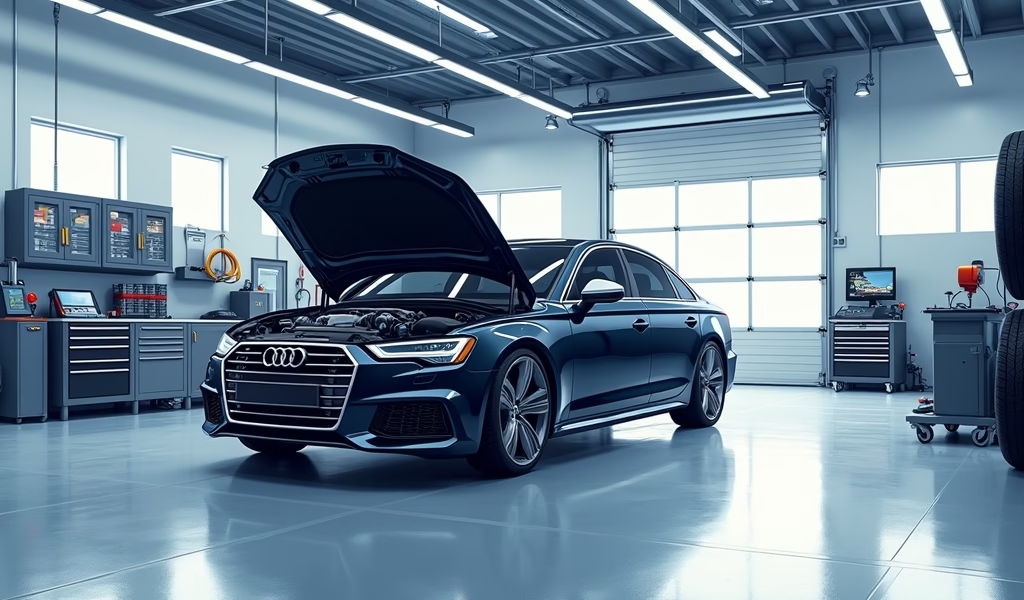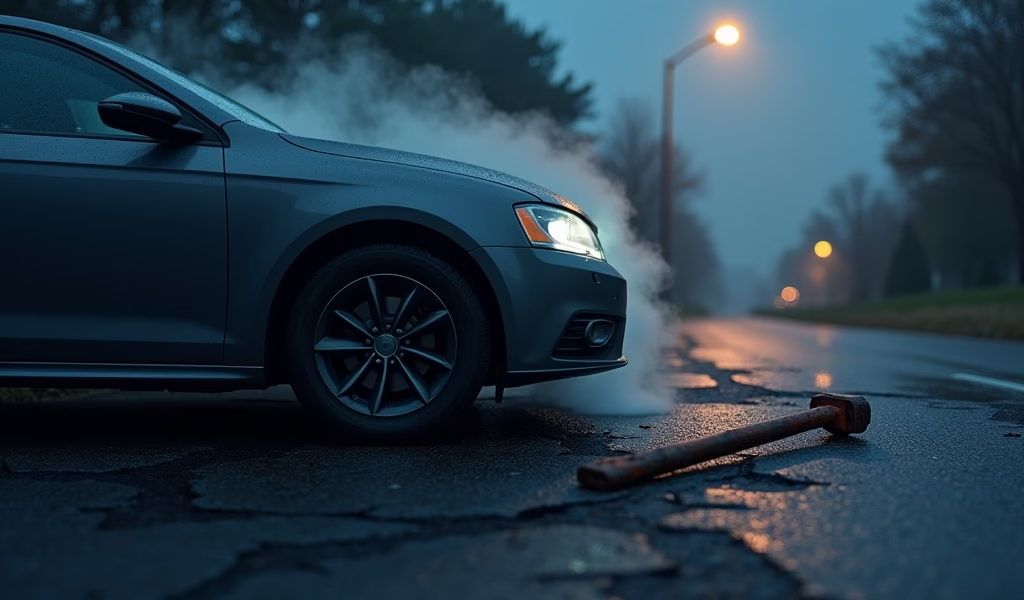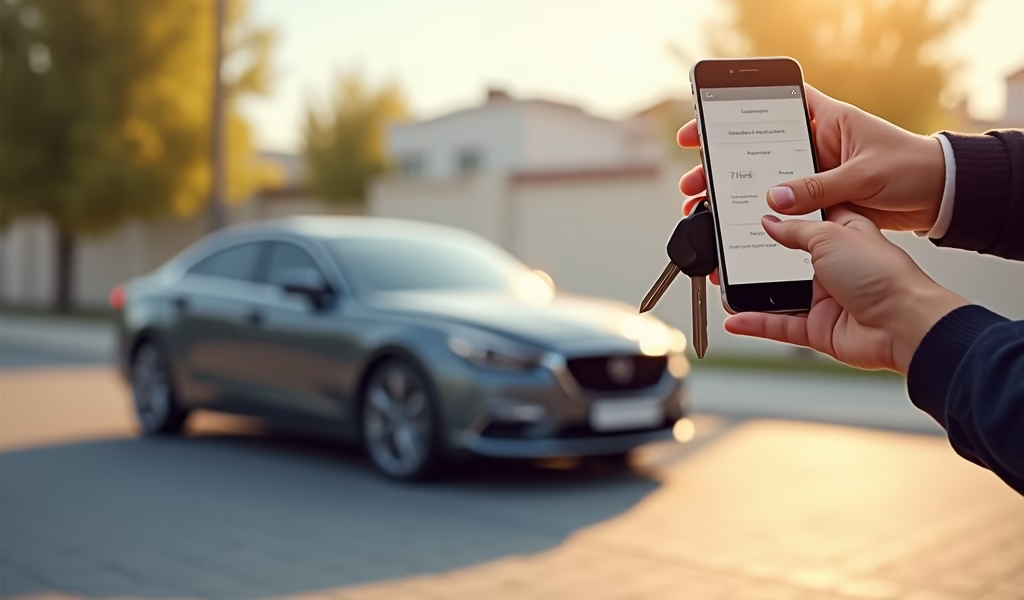Overview
This guide provides essential strategies for safely buying used vehicles on Facebook Marketplace, covering everything from initial research and inspection to negotiation, paperwork, and post-purchase steps. It emphasizes the importance of thorough vehicle inspections, secure payment methods, proper documentation, and taking safety precautions throughout the buying process to avoid scams and ensure a successful purchase.
Table of Contents
- Understanding Facebook Marketplace for Car Shopping
- Preparing for Your Marketplace Car Purchase
- Making Initial Contact with Sellers
- Essential Inspection Tips for Marketplace Vehicles
- Conducting a Thorough Test Drive
- Negotiation Strategies for Marketplace Cars
- Handling Paperwork and Legal Requirements
- Ensuring Payment and Transaction Safety
- After the Purchase: First Steps with Your New Car
- Conclusion
- Frequently Asked Questions
Understanding Facebook Marketplace for Car Shopping
The process of buying a used car off Marketplace has transformed the way many people shop for vehicles today. As a mechanic who’s helped countless customers evaluate their Marketplace finds, I’ve seen both remarkable deals and unfortunate lemons. Facebook Marketplace offers a convenient platform where private sellers can list their vehicles directly to potential buyers, often at prices below traditional dealerships.
What makes Marketplace unique is its integration with Facebook’s social network. Unlike anonymous classified sites, you can often view a seller’s profile, mutual friends, and their history on the platform. This added layer of transparency can provide valuable context when making such a significant purchase.
However, this convenience comes with responsibilities. Without the safeguards of a dealership, you’ll need to be more diligent throughout the buying process. The platform itself is merely a meeting place—Facebook doesn’t verify vehicle conditions, mediate disputes, or guarantee transactions. That’s why understanding the car buying process specifically for Marketplace is crucial for your success.
The platform’s inventory is incredibly diverse, ranging from project cars needing extensive work to near-new vehicles with remaining factory warranties. This variety is a double-edged sword—while you might find exceptional value, you’ll need to wade through many listings and exercise careful judgment to find the right match for your needs.
Preparing for Your Marketplace Car Purchase
Before diving into listings, take time to establish a realistic budget that accounts for more than just the purchase price. As a mechanic, I always remind buyers that ownership costs extend beyond the initial payment. Factor in insurance, registration fees, potential repairs, and regular maintenance costs for any vehicle you’re considering.
Research vehicle reliability ratings and common issues for the makes and models you’re interested in. Resources like Consumer Reports, J.D. Power, and CarComplaints.com can provide valuable insights into which models tend to be more reliable and what specific problems to look out for during your inspection.
Before browsing, determine your non-negotiable requirements versus nice-to-have features. Consider:
- Essential functional requirements (passenger capacity, cargo space, drivetrain)
- Safety features you won’t compromise on
- Maximum acceptable mileage
- Minimum acceptable model year
- Must-have features versus luxuries
Set up your Marketplace filters accordingly, focusing on these key parameters rather than getting distracted by listings outside your requirements. I recommend checking local dealer prices for similar vehicles to establish a realistic price range for private party sales—typically 10-15% below equivalent dealer prices for comparable condition.
Finally, arrange financing before shopping if you’ll need it. Credit unions often offer better rates than banks for used car loans, and having pre-approval strengthens your negotiating position. Understanding exactly how much you can spend helps prevent emotional decisions that exceed your budget.

Making Initial Contact with Sellers
When you’ve found promising listings, your initial communication sets the tone for the entire transaction. I’ve noticed that thoughtful first messages receive more prompt and detailed responses from sellers. Start with a friendly greeting and ask specific questions about the vehicle that weren’t addressed in the listing.
Instead of just asking “Is this available?” (which many sellers ignore due to frequent no-shows), demonstrate genuine interest by asking targeted questions like: “I noticed the car has 90,000 miles. Have you completed the timing belt service yet?” or “Could you tell me more about the maintenance history and if you have service records available?”
Legitimate sellers appreciate knowledgeable buyers who ask substantive questions. Their response quality often indicates how transparent they’ll be throughout the process. Watch for vague answers, excessive delays in responding, or reluctance to provide additional information—these can be warning signs.
When arranging a viewing, always suggest meeting in a public place during daylight hours for initial inspections. Many police stations now offer “safe exchange zones” specifically for online marketplace transactions. If the car isn’t easily movable, consider bringing a friend to the seller’s location. Safety should always be your priority during these transactions.
Before meeting, prepare a list of vehicle-specific questions based on your research of reliable used cars and common problems for that model. This preparation demonstrates to sellers that you’re a serious buyer while helping you gather crucial information to inform your decision.
Essential Inspection Tips for Marketplace Vehicles
When I inspect a Marketplace vehicle for clients, I follow a systematic approach that you can adopt. Start by examining the exterior in good lighting conditions. Walk around the entire vehicle looking for mismatched paint, panel gaps, overspray, or signs of accident repair. These details can reveal hidden history not disclosed in the listing.
Check all glass surfaces for cracks or stars, and test all exterior lights. Replacement headlight assemblies can be surprisingly expensive for many modern vehicles. Examine tire tread depth using the penny test (insert a penny with Lincoln’s head down—if you can see the top of his head, the tread is too worn) and look for uneven wear patterns that might indicate alignment issues.
When inspecting the interior:
- Test every button, switch, and control
- Check seat adjustments and heating/cooling functions
- Verify all windows operate smoothly
- Test the climate control in all modes
- Look under floor mats and seats for hidden damage or moisture
- Smell for musty odors that might indicate water damage
For the mechanical inspection, arrive with the engine cold if possible. A warm engine can mask starting problems or leaks. Look for fresh oil spots under the vehicle and check all fluid levels and conditions. Discolored fluids often indicate neglected maintenance.
Always check the vehicle identification number (VIN) in multiple locations (dashboard, door jamb, engine compartment) to ensure they match. Then run the VIN through a service like Carfax or AutoCheck to verify the vehicle’s history. While these reports aren’t infallible, they can reveal accidents, title problems, or odometer discrepancies not disclosed by the seller.
If you’re not mechanically inclined, consider investing in a pre-purchase inspection from an independent mechanic, which typically costs $100-200. This small investment could save thousands by identifying hidden problems before purchase.
Conducting a Thorough Test Drive
A proper test drive reveals issues that static inspection can’t detect. Plan a route that includes various driving conditions: city streets, highways, and if possible, hills or rough pavement to evaluate suspension behavior. Aim for at least 30 minutes behind the wheel to give systems time to reach operating temperature.
Start with the engine cold if possible and note how it starts. Excessive cranking, smoke, or unusual noises during cold start can indicate engine problems. Once driving, evaluate these key aspects:
- Acceleration: Should be smooth without hesitation or surging
- Braking: Car should stop straight without pulling or pulsating
- Steering: Watch for excessive play, pulling, or vibration
- Transmission: Shifts should be smooth without clunking or slipping
- Suspension: Listen for knocks over bumps or excessive bouncing
- Engine: Note any unusual sounds, vibrations, or warning lights
During my years helping customers evaluate used cars, I’ve found that unusual sounds often tell the most important stories. Turn off the radio and listen carefully for knocks, whines, or rattles. Try to drive both with windows up (to hear mechanical noises) and down (to hear suspension and drivetrain sounds).
Test all driving modes and features during your drive. If the vehicle has four-wheel drive, make sure to engage it. Test cruise control, lane-keeping systems, and any other driver assistance features. Each function should work as designed without warning lights or errors.
After driving for at least 15 minutes, find a safe place to park and check under the hood again. Look for any new leaks or unusual smells that might have developed during operation. A vehicle that performs flawlessly during a thorough test drive is much more likely to be reliable long-term.

Negotiation Strategies for Marketplace Cars
Approaching negotiations with knowledge and respect yields the best results. Based on your inspection findings, compile a list of any issues requiring repair and research their approximate costs. This gives you concrete points for negotiation rather than arbitrary numbers.
When discussing price, maintain a friendly, collaborative tone. I’ve seen many deals sour because a buyer approached negotiations as a battle rather than a conversation. Start by acknowledging the vehicle’s positive aspects before transitioning to your concerns.
For example: “I really like the car’s condition overall and can tell you’ve maintained it well. However, I noticed the brake rotors will need replacement soon and the air conditioning isn’t cooling properly. I’ve researched these repairs and they’ll cost approximately $700 to address. Would you be willing to adjust the price to account for these upcoming expenses?”
Be prepared to walk away if the seller is inflexible or if something doesn’t feel right. There are always more cars available, and pressure to close a deal quickly often leads to regrettable purchases. The best car buying tips I share with my clients always include being patient with the process.
Once you’ve agreed on a price, confirm all details in writing through Marketplace messaging or text. Having a record of what was promised helps prevent misunderstandings when finalizing the sale.
Handling Paperwork and Legal Requirements
Proper documentation is crucial when buying a used car privately. The essential document is the vehicle title, which must be properly signed by the registered owner(s). Verify that the name on the title matches the seller’s identification and that the VIN on the title matches the vehicle.
Be wary of these title red flags:
- Recently issued titles (possible title washing to hide problems)
- Titles marked “Salvage,” “Rebuilt,” or “Reconstructed”
- Seller not listed as the owner or title not in their name
- Signs of alteration or inconsistent information
Most states require a bill of sale documenting the transaction details. Even if not required, I recommend creating one that includes:
- Full names and addresses of buyer and seller
- Vehicle description (year, make, model, VIN)
- Purchase price and date
- Odometer reading
- Signatures from both parties
- Any warranties or promises made about the vehicle’s condition
Some states require additional documentation, such as emissions certificates, odometer disclosure forms, or lien releases. Research your state’s requirements through the DMV website before completing the purchase to ensure you collect all necessary paperwork.
Keep copies of all listing information and communications with the seller, especially any claims about the vehicle’s condition or history. These records could prove valuable if unexpected issues arise after purchase.
Ensuring Payment and Transaction Safety
Payment safety is paramount when handling large sums for private party vehicle purchases. In my experience, cash has traditionally been the safest method for both parties, eliminating concerns about check fraud or payment reversals. However, carrying large amounts of cash comes with obvious safety risks.
Consider these safer alternatives to cash:
- Cashier’s check from a bank (verify with the issuing bank before accepting)
- Wire transfer (complete at your bank with verification)
- Electronic payment apps like Zelle (if linked to your bank)
- Meeting at the seller’s bank to complete the transaction
Always avoid payment methods with high fraud potential, including personal checks, money orders, cryptocurrency, or payment platforms that allow chargebacks. Similarly, never ship money or provide deposits to sellers you haven’t met for vehicles you haven’t seen in person.
The safest transaction location is inside a bank during business hours, where you can verify funds and complete paperwork with an added layer of security. Many police departments also offer safe exchange zones with video surveillance specifically for online marketplace transactions.
Trust your instincts throughout the process. If a seller pressures you to use unusual payment methods, seems evasive about meeting locations, or creates unnecessary urgency, these are warning signs to walk away. According to the Federal Trade Commission, online marketplace scams often share these common characteristics.
After the Purchase: First Steps with Your New Car
Once you’ve completed the purchase, there are several important steps to take before considering the process complete. First, register the vehicle in your name as soon as possible—driving unregistered can result in tickets or impoundment. Most states provide temporary operating permits if you need time to complete inspections or emissions testing.
Contact your insurance company immediately to ensure coverage begins the moment you take possession. Many insurers offer grace periods for adding vehicles, but explicit coverage provides peace of mind and legal protection.
Even if the vehicle passed your inspection, I recommend scheduling a complete service with your trusted mechanic within the first week of ownership. This “baseline service” should include:
- Complete fluid changes (oil, transmission, coolant if needed)
- New filters (oil, air, cabin air, fuel)
- Inspection of belts, hoses, and wear items
- Computer system scan for pending codes
- Brake system evaluation
This service creates a fresh starting point for your maintenance records and might catch issues missed during your pre-purchase inspection. It’s also an opportunity to develop a maintenance plan based on the vehicle’s current condition and your driving patterns.
Finally, take time to familiarize yourself with the owner’s manual and features. Modern vehicles have complex systems that require specific understanding for proper operation and maintenance. Learning these details helps you maximize your new vehicle’s reliability and performance.
Conclusion
The process of buying a used car off Marketplace can be rewarding when approached with the right knowledge and precautions. The platform offers access to a wide selection of vehicles, often at better prices than traditional dealerships, but requires more buyer diligence throughout the process.
By thoroughly researching your target vehicles, conducting proper inspections, test driving carefully, handling paperwork correctly, and ensuring safe payment methods, you can navigate Marketplace car purchases with confidence. Remember that patience is your ally—rushing through any stage of this process increases your risk of problems.
While this guide covers the essentials, each vehicle purchase has unique considerations. When in doubt, consulting with a trusted mechanic or bringing one along for inspections provides valuable peace of mind. The modest cost of professional pre-purchase inspection services is insignificant compared to the potential expense of major undisclosed issues.
With careful attention to the details outlined in this guide, you’ll be well-equipped to find a reliable used vehicle that meets your needs without the premium prices of dealership offerings. Happy hunting, and may your Marketplace purchase bring you many miles of trouble-free driving!
Frequently Asked Questions
How can I verify if a Marketplace car has a clean title?
Ask to see the physical title and run the VIN through a service like Carfax or AutoCheck. Always verify that the VIN on the title matches the one on the dashboard and door jamb.
Is it safe to buy a car through Facebook Marketplace?
It can be safe if you take proper precautions including meeting in public places, bringing a friend, and having the vehicle inspected. Never send money for a vehicle you haven’t seen in person.
How should I pay for a car purchased through Marketplace?
The safest payment methods are cash (for smaller amounts), cashier’s checks verified with the issuing bank, or completing the transaction inside a bank. Avoid personal checks, wire transfers to strangers, or payment apps without purchase protection.
Should I get a pre-purchase inspection for a Marketplace car?
Absolutely—a professional pre-purchase inspection typically costs $100-200 and can save you thousands in unexpected repairs. This is especially important for higher-priced vehicles or those with complex systems.
How quickly do I need to register a car purchased from Marketplace?
Registration deadlines vary by state, typically ranging from 5 to 30 days after purchase. Check with your local DMV for specific requirements and consider obtaining a temporary operating permit if needed.


Pingback: Process of Buying a Used Car off Facebook Marketplace: 5 Proven Maintenance Tips - knowsyourcar.com
Pingback: best way to buy a used car: 5 Care Tips - knowsyourcar.com